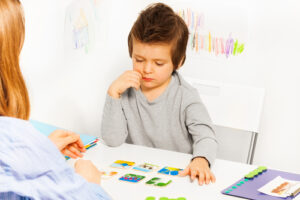
7 Strategies to Help Students with Autism

Autism Spectrum Disorder (ASD) is a disorder in which children experience difficulty with social interactions, become fixated with particular topics or have a tendency to do the same thing over and over. Each situation is very unique and it’s important for people to understand the disorder and be aware of strategies that can benefit their learning experience. Below are 7 strategies to help students with autism.
1. Provide a clear structure and daily routine. For teachers, it’s a wise idea to have a schedule ready at the beginning of each day for them. It should include the time and the activity that’s taking place. For younger children, the same thing can be accomplished but by using pictures instead of words. Autistic children also benefit from smooth transitions between activities and changes in their day.
Click here for some great ideas!
2. Give them fewer choices. Children with autism can get overwhelmed and confused easily when presented with a variety of choices. It’s best to give them two choices so that they can make a clear decision.
3. Teach specific social skills and model these behaviors for them. Learning social skills is an area that children with autism struggle with. Practice eye contact, role-playing, asking questions to each other, and basic communication techniques. This will help the children learn how to interact with their peers, adults, play together and work cooperatively in groups.
Link for social skills strategies
4. Check for understanding. It may be difficult for these students to understand directions completely. Make sure to check in with them after giving directions and have them repeat them back to you so that you know that they are comprehending.
5. Give them an appropriate amount of wait time. Be patient! If they don’t respond immediately after giving them directions or asking a question, don’t jump to the conclusion that they don’t know. It might take them a couple of seconds or so to process their thoughts and what is being asked of them.
6. Provide visuals cues to help aide in learning. Since communication skills is tough for children with autism, visuals such as photographs, pictures, lists, charts, and other objects can help them to communicate. Parents and teachers often like to post visual cards around the classroom or house to emphasize certain behaviors. Below is a link that contains some great visual materials to use.
7. Do not use sarcasm. Students with autism have a tendency to take language literally and sarcasm and be very confusing to them. For example if you say, “It’s raining cats and dogs!” the child may really think there are cats and dogs coming out of the sky. You can try to explain and teach sarcasm as autistic kids get older, but it may take awhile for them to get the hang of it.
Please be aware and remember to treat children with autism with respect! They are human too and deserve to receive the help they need and an equal education as everyone else.



